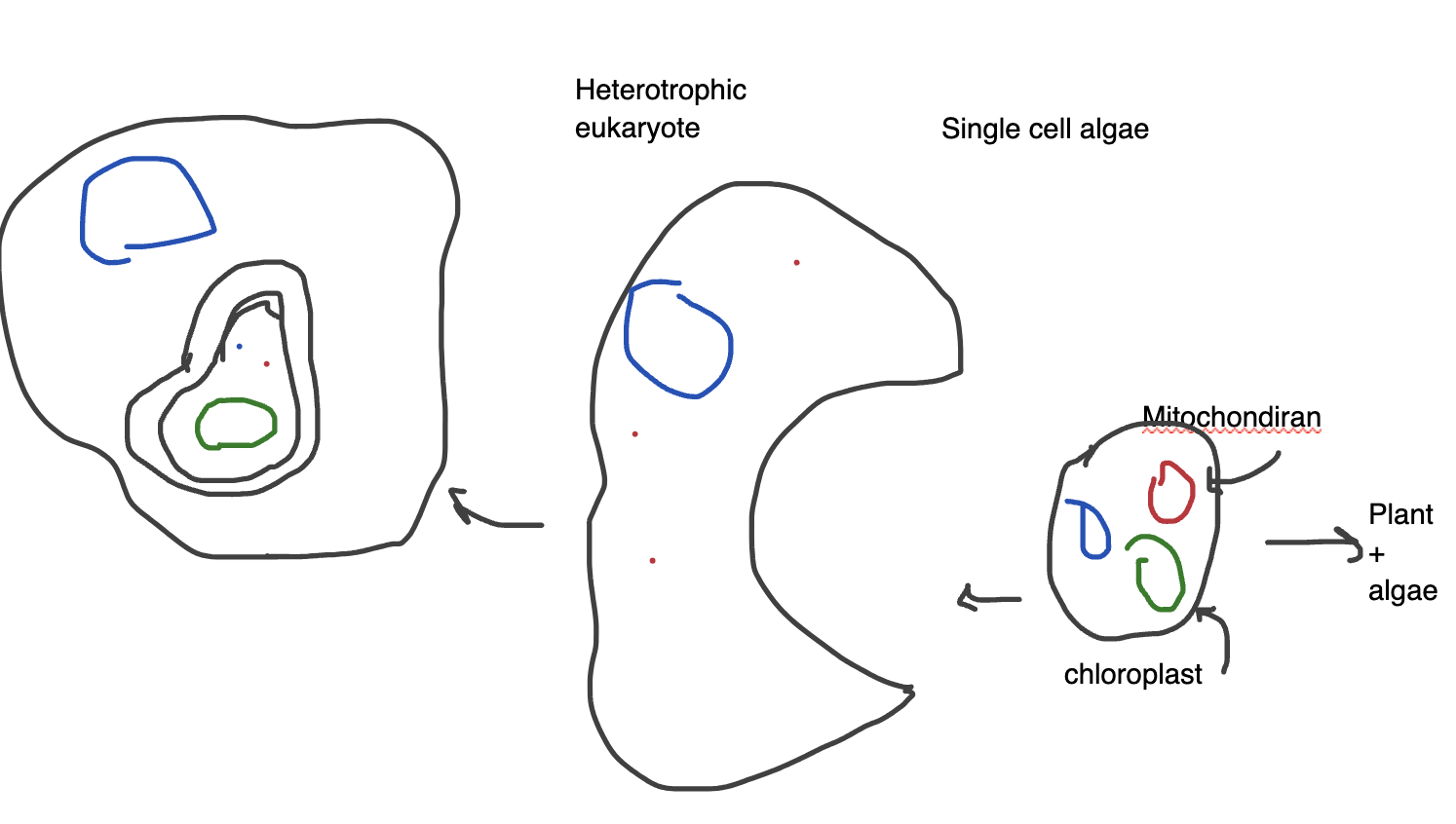(ch. 28)
0.0(0)
0.0(0)
New
Card Sorting
1/22
There's no tags or description
Looks like no tags are added yet.
Study Analytics
Name | Mastery | Learn | Test | Matching | Spaced |
|---|
No study sessions yet.
23 Terms
1
New cards
Eukaryotes
Organisms with a nucleus and linear chromosomes that divide by mitosis.
2
New cards
Primary endosymbiosis
Acquisition of mitochondria and/or chloroplasts from an endosymbiosis event involving bacteria.
3
New cards

Secondary endosymbiosis
Involves the engulfing of a eukaryotic cell containing a chloroplast.
4
New cards
Excavata
A clade of eukaryotes characterized by an excavated groove in the plasma membrane and unique flagellum.
5
New cards
Rhizarians
Eukaryotic group with amoeboid shapes and pseudopodia.
6
New cards
Chloroplast
An organelle that is essential for photosynthesis and can vary depending on pigment presence.
7
New cards
Phycology
The study of algae.
8
New cards
Photic zone
The region of water where light can penetrate, facilitating photosynthesis.
9
New cards
Algal blooms
Rapid reproduction of algae under favorable conditions, often resulting in high population densities that can be harmful.
10
New cards
Diatoms
Producers known for their silica cell walls that play a significant role in carbon dioxide uptake through photosynthesis.
11
New cards
Mitosis
The process by which eukaryotic cells divide to produce two identical daughter cells.
12
New cards
Contractile vacuole
Organelles used by freshwater single-celled eukaryotes to manage osmotic pressure.
13
New cards
Nutrition
The ways organisms obtain food, which can be photoautotrophic, heterotrophic, or mixotrophic.
14
New cards
Protozoa
Single-celled eukaryotes that can cause diseases, such as malaria and sleeping sickness.
15
New cards
Malaria
A disease caused by single-celled eukaryotic parasites called apicomplexans.
16
New cards
Symbiosis
A mutually beneficial relationship between two different organisms.
17
New cards
Zooxanthellae
Photosynthetic dinoflagellates that live symbiotically within coral tissues.
18
New cards
Coral bleaching
The loss of symbiotic algae from coral, leading to a decrease in health and productivity.
19
New cards
Trichonympha
A genus of protists that can digest cellulose, found in the guts of some herbivorous animals.
20
New cards
Slime molds
Eukaryotic organisms that are involved in decomposition but are not primary decomposers.
21
New cards
Mixotrophic
Organisms that acquire nutrition through both the process of photosynthesis and consuming other organisms.
22
New cards
Photoautotrophic
photosynthesis + inorganic carbon
23
New cards
SAR
A clade of eukaryotes that includes Stramenopiles, Alveolates, and Rhizarians, known for their diverse forms and functions in different habitats.